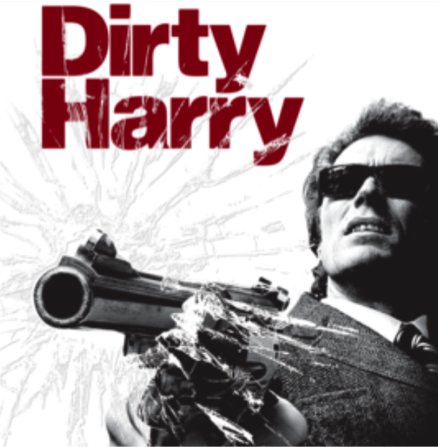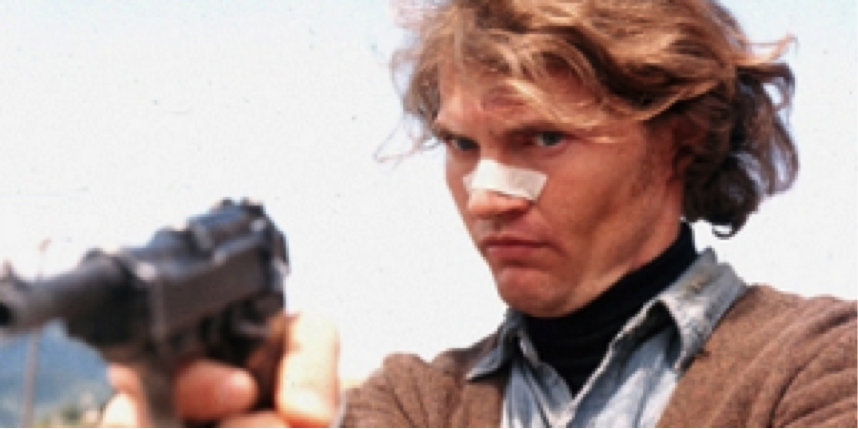A recent EMAIL ALCHEMIST post about Clint Eastwood and the business lessons we can derive from his life and the characters he played seemed to hit a nerve.
So this week I figured I’d dig a little deeper into the story to draw some valuable parallels between Clint’s approach to movie making and marketing in general.
 First off, there is the careful crafting of an enduring archetypal character that underpins so many of the various roles Clint played.
First off, there is the careful crafting of an enduring archetypal character that underpins so many of the various roles Clint played.
You may wonder what character and marketing have in common …
The first rule of direct response marketing is that people buy from people. At the most basic level, we trust individuals much more readily than we trust corporations.
We relate with flesh and blood human beings. We can see the whites of their eyes and instinctively judge if they’re telling us the truth.
We relate still more with people who appear to be cut from the same cloth we are… who share the same ideals, beliefs and values we do. We feel comfortable with such people. We enjoy their company and their ideas. We want to be closer to them. And we want them to win.
But most of all, we relate to people who embody the ideals, beliefs and values we aspire to, but have not yet attained. This is the magical allure of Clint’s fearless, independent, take-matters-into-your-own hands persona. It resonates strongly with the extreme alpha-male lurking in our DNA.
The character you craft as the spokesperson for your company should resonate with the specific target customer you wish to influence on each of these levels. Your character must be imminently human, genuine, and real. You must be seen as being one of them. And you must be seen as a leader among them.
Whether you characterize yourself as a ruggedly independent take-no-prisoners renegade, or a kind and nurturing consensus maker – or anything in between – the important thing is that your prospects identify strongly with your character.
What else can we learn about copywriting and marketing from an Eastwood flick?
Both movies and sales copy must seize and maintain attention from beginning to end if they are to be successful.
A great movie trailer can entice people into the theater, but once inside, they need compelling reasons to stay involved.
Similarly your sales copy must not only capture interest, but hold it unswervingly through time. A movie rewards that interest with an emotional climax. Your sales copy with a satisfying exchange of value for value.
Both tasks are next to impossible without the creative stimulation of both the head and the heart.
As you watch the exploits of Harry Callahan on the silver screen, you’re energized by fear, anger, compassion, suspense, surprise. They arise in response to your intellectual need to answer questions and resolve problems posed by the plot.
The same is true of storytelling in sales copy.
Each twist of the tale stimulates your prospect’s whole brain …
Like a movie goer, projecting himself into Eastwood’s heroic shoes, your prospect wants to know: What’s going to happen next? How will it turn out?
 A great movie makes you laugh, it makes you cry, it makes your heart race with breathless excitement, but above all – it makes you wait. How many bad movies have you sat through because you had to know the nagging answer to these questions?
A great movie makes you laugh, it makes you cry, it makes your heart race with breathless excitement, but above all – it makes you wait. How many bad movies have you sat through because you had to know the nagging answer to these questions?
The same eternal teasing from beginning to the end will hook your prospects on reading every word of your sales copy, especially if the questions you raise and the problems you pose deal with primal human motivations.
Revenge … survival … sex … the desire to protect one’s family … and the powerful feelings these motivations inspire are what make us feel alive. They are addictive, intoxicating … ever more so in our increasingly sanitized, antiseptic world.
If you want to maximize your response, look for ways to reduce your appeals down to one or more of these lowest common denominators.
And conflict is crucial.
When conflict engages our thoughts and emotions, our awareness of time disappears. We become engrossed.
The essence of life is conflict – an endless competition for esteem … resources … sexual partners … safety … freedom. A world filled with peace and brotherly love and endless abundance might be a nice thought, but it makes a lousy story.
There can be no satisfaction without conflict. Once housed, dressed, fed, and medicated, the inner wars begin. Boredom, self-loathing, loneliness, there is no escape. The endless wounds of life are ever waiting the soothing balm of your product or service.
In response to the previous article somebody pointed out that Clint Eastwood characters were cold blooded killers, hardly the heroic or upstanding role models I made them out to be.
14. Yeah well – frankly Clint Eastwood and John Wayne must have worked hard to get where they did but in no way were their characters any kind of hero or upstanding role models. They played jerk renegade killers with frozen hearts for the most part.
And it’s true. Many of Eastwood’s characters are driven by revenge, the darkest underbelly of primal human emotion. Yet heroes and powerful role models they remain. How can this be?
The answer to this question leads us to another valuable marketing lesson …
As your sales story unfolds, as you reveal conflict between good and evil, your prospects always unconsciously identify with the positive.
Each of us believes deep down in our hearts that we are good and that we are right. We know we are flawed, full of bestial, selfish, and base thoughts that are far from heroic, but our hearts are in the right place.
The worst criminals on Earth believed themselves to be fundamentally good people. John Dillinger fancied himself somewhat of a modern day Robin Hood. Al Capone believed he was one of the good guys. “I’m just a businessman, giving the people what they want.” Even Hitler considered himself the savior of Europe.
It’s human nature to identify with the good and the just …
Your prospects will always empathize with these qualities in your character. And the good and the just are relative values.
From the audience’s point of view, “good” is a judgment made in relationship to or against a backdrop of conflict. That’s why every satisfying sales story needs a villain – the more villainous the better.
Eastwood’s Dirty Harry is a cold-blooded killer. He’s an equal opportunity bigot. He hates every ethnicity equally – hardly a positive role model.
But in comparison to his nemesis, Scorpio – a homicidal maniac who buries 14 year old girls alive – Harry is positively warm and cuddly.

We accept his shortcomings and imperfections and his violent vigilante tendencies because we see them in ourselves. We are forgiven for harboring them because in the face of evil incarnate, they are necessary. The end justifies the means. We only wish we had his courage.
In the same way, the character you play on the sales stage need not be perfect, either. Who among us is?
As long as you’re involved in mortal combat against a brutal, cold-blooded, corrupt and immoral common adversary, your prospects will willingly embrace your less-than-perfect past. They’ll admire your unorthodox, politically-incorrect approach to solving problems.
And they’ll bond with you like super-glue.
If it worked for Dirty Harry, maybe it will work for you too.
Until next time, Good Selling!
Great article. Thank you.
WOW! I get it! Thank you, Daniel!
I’m sorry, how does this translate or apply to what you are teaching, professing and saying?
Can u connect the dots for me please?